Alternative Design of Double-Suction Centrifugal Pump to Reduce the Effects of Silt Erosion
Abstract
:1. Introduction
2. Research Methods
2.1. Experimental Test
2.1.1. Test Rig
2.1.2. Painted Impeller
2.1.3. Sand Sampling
2.1.4. Experimental Procedure
2.2. Numerical Simulation
2.2.1. Simulation Method
2.2.2. Boundary and Calculation Conditions
2.2.3. Three-Dimensional Model and Mesh of Pump
3. Results and Discussion
3.1. Experimental Validation
3.2. Erosion Characteristics of Prototype Blades
3.2.1. Effect of Silt Size
3.2.2. Effect of Silt Concentration
3.3. Erosion Characteristics of Bionic Blades
3.4. Analysis of Anti-Erosion Mechanism
4. Conclusions
- The silt size affects the erosion position and erosion strength, whereas the silt concentration affects mainly the erosion strength, within the studied range. With silt size increasing, the silt erosion rate on the leading edge of blade increases, whereas the silt erosion rate on the pressure side of the blade decreases initially and then increases, and the silt eroded position on the suction side is different for a small and a large silt size. As silt concentration increases, the erosion position of the blade surface is basically the same, but the silt erosion rate increases.
- The bionic convex dome is an effective method to reduce the silt erosion of the blade by changing the erosion pattern. The erosion rate on the suction side of the 0.04 mm silt size condition increased, but silt erosion on the blade with bionic convex domes under other conditions improved significantly by decreasing the erosion rate and the area.
- Silt erosion was reduced when the bionic convex domes change the relative velocity of water around the blade surface and decrease the mass flow rate of silt particles that hit the blade by inducing swirling flows.
Author Contributions
Funding
Acknowledgments
Conflicts of Interest
References
- Thapa, B.; Shrestha, R.; Dhakal, P.; Thapa, B.S. Problems of Nepalese hydropower projects due to suspended sediments. Aquat. Ecosyst. Health Manag. 2005, 8, 251–257. [Google Scholar] [CrossRef]
- Finnie, I. Erosion of surfaces by solid particles. Wear 1960, 3, 87–103. [Google Scholar] [CrossRef]
- Qian, Z.D.; Wang, Z.Y.; Zhang, K.; Wu, Y.; Wu, Y.L. Analysis of silt abrasion and blade shape optimization in a centrifugal pump. Proc. Inst. Mech. Eng. A-J Power 2014, 228, 585–591. [Google Scholar] [CrossRef]
- Thapa, B.S.; Thapa, B.; Eltvik, M.; Gjosater, K.; Dahlhaug, O.G. Optimizing runner blade profile of Francis turbine to minimize sediment erosion. Iop Conf. Ser. Earth Environ. 2013, 15, 1–11. [Google Scholar] [CrossRef]
- Wellinger, K.; Uetz, H.; Gurleyik, M. An investigation of the sliding wear of various metallic and hard non-metallic materials in contact with abrasives. Wear 1968, 11, 173–199. [Google Scholar] [CrossRef]
- Laitone, J.A. Aerodynamic Effects in the Erosion Process. Wear 1979, 56, 239–246. [Google Scholar] [CrossRef]
- Mansouri, A.; Khanouki, H.A.; Shirazi, S.A.; McLaury, B.S. Particle Tracking Velocimetry (PTV) Measurement of Abrasive Microparticle Impact Speed and Angle in Both Air-Sand and Slurry Erosion Testers. In Proceedings of the ASME Fluids Engineering Division Summer Meeting, Washington, DC, USA, 10–14 July 2016. [Google Scholar]
- Itaya, T.; Nishikawa, T. Study on Sand Pump: 1st Report, on the Trajectories of Solid Particles in the Pump Impeller. Bull. JSME 1964, 7, 577–582. [Google Scholar] [CrossRef]
- Zarya, A. The effect of the solid phase of a slurry on the head developed by a centrifugal pump. Fluid Mech. Sov. Res. 1975, 4, 144–154. [Google Scholar]
- Xu, H.Y. Study on particle motion in pump impeller. Pump Technol. 1994, 5, 16–19. (In Chinese) [Google Scholar]
- Li, Y.; Zhu, Z.C.; He, Z.H.; He, W.Q. Abrasion characteristic analyses of solid-liquid two-phase centrifugal pump. J. Therm. Sci. 2011, 20, 283–287. [Google Scholar] [CrossRef]
- Padhy, M.K.; Saini, R.P. Study of silt erosion mechanism in Pelton turbine buckets. Energy 2012, 39, 286–293. [Google Scholar] [CrossRef]
- Padhy, M.K.; Saini, R.P. Effect of size and concentration of silt particles on erosion of Pelton turbine buckets. Energy 2009, 34, 1477–1483. [Google Scholar] [CrossRef]
- Thapa, B.S.; Thapa, B.; Dahlhaug, O.G. Current research in hydraulic turbines for handling sediments. Energy 2012, 47, 62–69. [Google Scholar] [CrossRef]
- Khanal, K.; Neopane, H.P.; Rai, S.; Thapa, M.; Bhatt, S.; Shrestha, R. A methodology for designing Francis runner blade to find minimum sediment erosion using CFD. Renew. Energy 2016, 87, 307–316. [Google Scholar] [CrossRef]
- Thapa, B.S.; Dahlhaug, O.G.; Thapa, B. Sediment erosion induced leakage flow from guide vane clearance gap in a low specific speed Francis turbine. Renew. Energy 2017, 107, 253–261. [Google Scholar] [CrossRef]
- Koirala, R.; Neopane, H.P.; Shrestha, O.; Zhu, B.S.; Thapa, B. Selection of guide vane profile for erosion handling in Francis turbines. Renew. Energy 2017, 112, 328–336. [Google Scholar] [CrossRef]
- Roman, J.; Xin, L.; Hui, W.; Reginensi, J. Dealing with abrasive erosion in hydro turbine. Hydropower Dams 1997, 3, 67–71. [Google Scholar]
- Mann, B.S.; Arya, V. Abrasive and erosive wear characteristics of plasma nitriding and HVOF coatings: Their application in hydro turbines. Wear 2001, 249, 354–360. [Google Scholar] [CrossRef]
- Lin, N.; Xie, F.; Zou, J.; Tang, B. Slurry erosion behaviors of P110 steel and chromizing coating in liquid-solid two-phase flow. Sci. China Technol. Sci. 2013, 56, 1415–1423. [Google Scholar] [CrossRef]
- Pasha, A.; Ghasemi, H.; Neshati, J. Synergistic Erosion–Corrosion Behavior of X-65 Carbon Steel at Various Impingement Angles. J. Tribol. 2017, 139, 011105. [Google Scholar] [CrossRef]
- Huang, H.; Zhang, Y.; Ren, L. Particle erosion resistance of bionic samples inspired from skin structure of desert lizard, Laudakin stoliczkana. J. Bionic Eng. 2012, 9, 465–469. [Google Scholar] [CrossRef]
- Han, Z.W.; Yin, W.; Zhang, J.Q.; Jiang, J.L.; Mu, S.C.; Ren, L.Q. Erosion-Resistant Surfaces Inspired by Tamarisk. J. Bionic Eng. 2013, 10, 479–487. [Google Scholar] [CrossRef]
- Qian, Z.D.; Dong, J.; Guo, Z.W.; Wang, Z.Y.; Wang, F. Study of a Bionic Anti-Erosion Blade in a Double Suction Centrifugal Pump. In Proceedings of the 14th International Conference on Nanochannels, Microchannels, and Minichannels, Washington, DC, USA, 10–14 July 2016; American Society of Mechanical Engineers: Washington, DC, USA, 2016. [Google Scholar]
- Ferziger, J.H.; Perić, M. Computational Methods for Fluid Dynamics; Springer Science & Business Media: Berlin, Germany, 2012; pp. 80–84. [Google Scholar]
- Wallace, M.; Peters, J.; Scanlon, T.; Dempster, W.; McCulloch, S.; Ogilvie, J. CFD-based erosion modeling of multi-orifice choke valves. In Proceedings of the 2000 ASME Fluids Engineering Summer Meeting, Boston, MA, USA, 11–15 June 2000. [Google Scholar]
- Habib, M.A.; Badr, H.M.; Ben-Mansour, R.; Kabir, M.E. Erosion rate correlations of a pipe protruded in an abrupt pipe contraction. Int. J. Impact Eng. 2007, 34, 1350–1369. [Google Scholar] [CrossRef]
- Edwards, J.; McLaury, B.; Shirazi, S. Supplementing a CFD code with erosion prediction capabilities. In Proceedings of the ASME FEDSM, Washington, DC, USA, 21–25 June 1998. [Google Scholar]
- Edwards, J.; McLaury, B.; Shirazi, S. Evaluation of alternative pipe bend fittings in erosive service. In Proceedings of the ASME Fluids Engineering Summer Meeting, Boston, MA, USA, 11–15 June 2000. [Google Scholar]
- Haugen, K.; Kvernvold, O.; Ronold, A.; Sandberg, R. Sand Erosion of Wear-Resistant Materials—Erosion in Choke Valves. Wear 1995, 186, 179–188. [Google Scholar] [CrossRef]
- Shah, S.N.; Jain, S. Coiled tubing erosion during hydraulic fracturing slurry flow. Wear 2008, 264, 279–290. [Google Scholar] [CrossRef]
- ANSYS Inc. FLUENT User’s Guide; ANSYS Inc.: Canonsburg, PA, USA, 2013. [Google Scholar]
- Xu, H.Y.; Chen, X.M.; Wang, L.; Gao, Z.Q.; Wu, Y.L. A Study on Motion of Solid Particles in Centrifugal Pump Impeller. Fluid Eng. 1992, 20, 1–64. (In Chinese) [Google Scholar]
- Liu, J.; Xu, H.Y.; Tang, S.; Lu, L.; Luo, X.W. Experimental research on the movement rule of solid particles in centrifugal pump. J. Hydroelectr. Eng. 2008, 27, 168–172. (In Chinese) [Google Scholar]
- Wang, Y.; Gu, B.Q.; Shao, C.L. Analysis on tracing characteristics of sparse particles in impeller of molten salt pump based on Lagrange algorithm. J. Nanjing Tech Univ. 2016, 38, 50–55. (In Chinese) [Google Scholar]

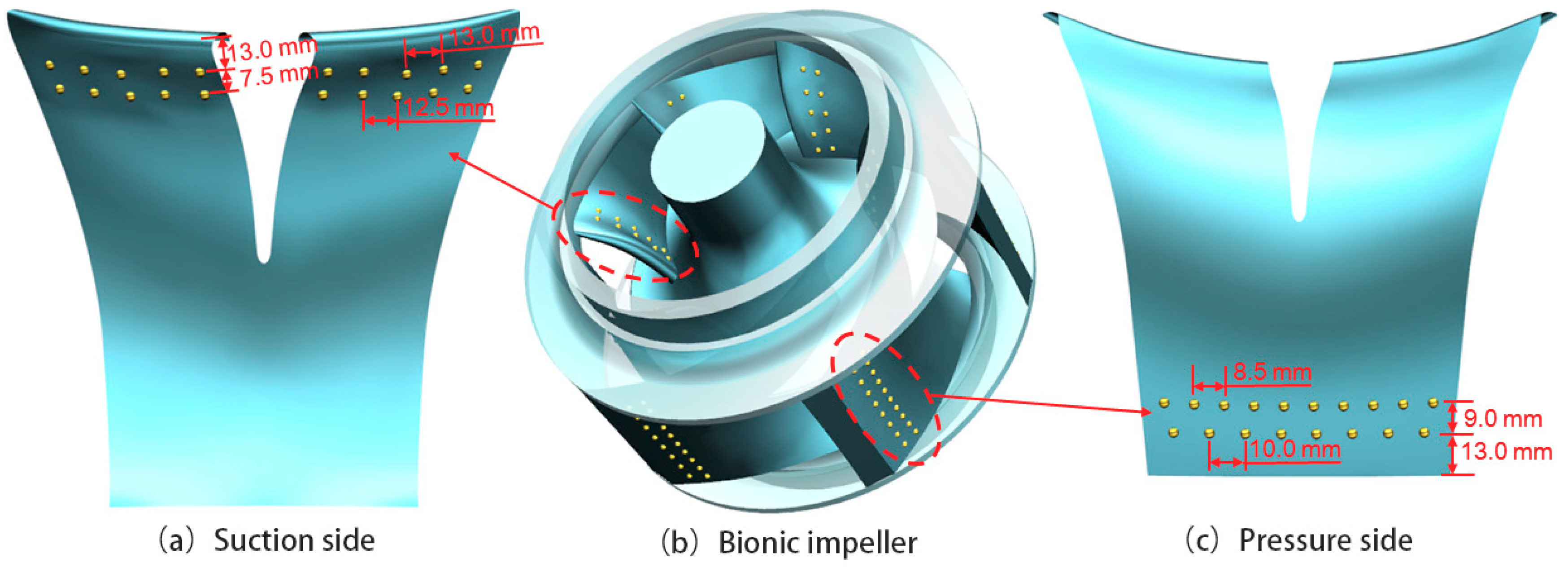
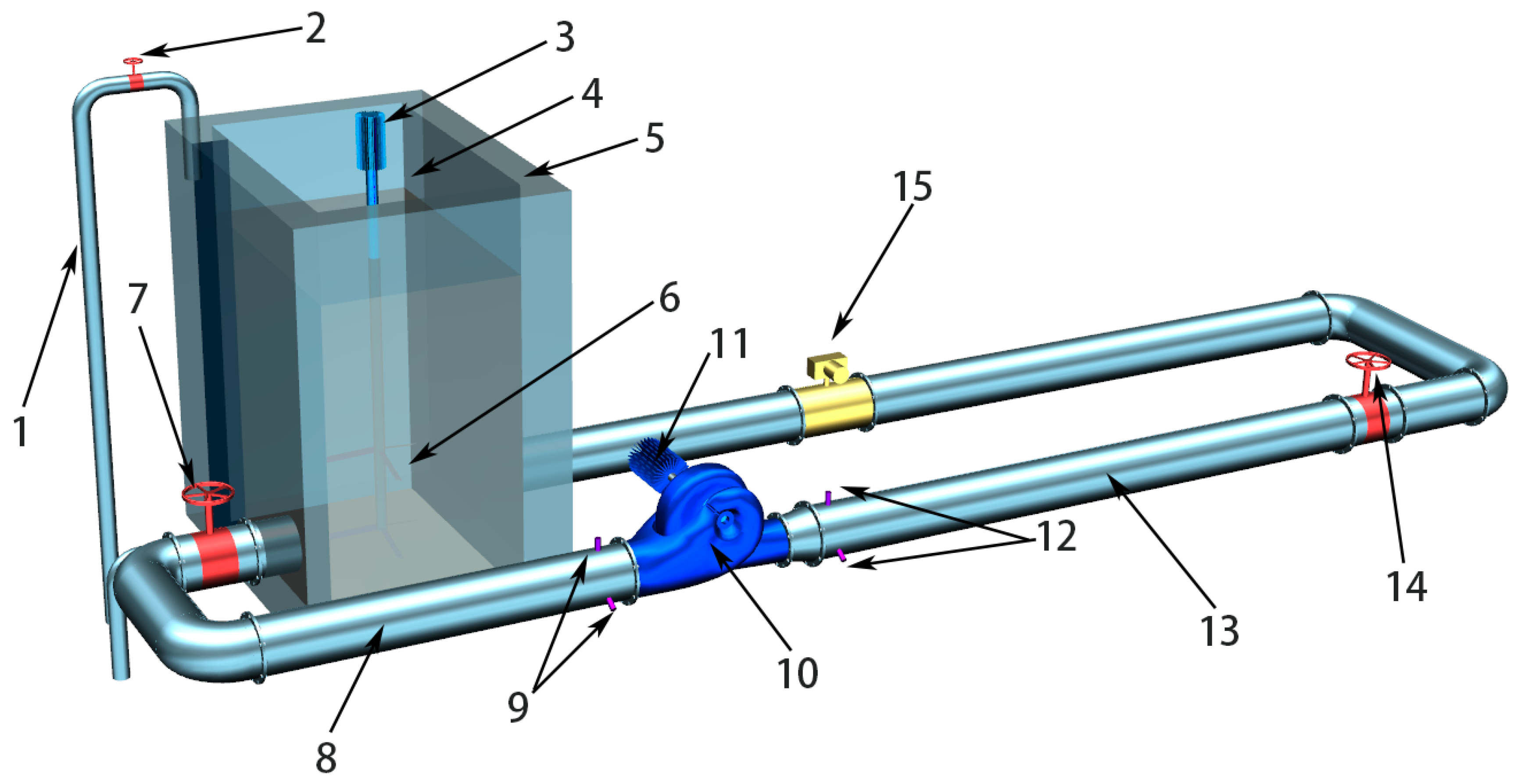
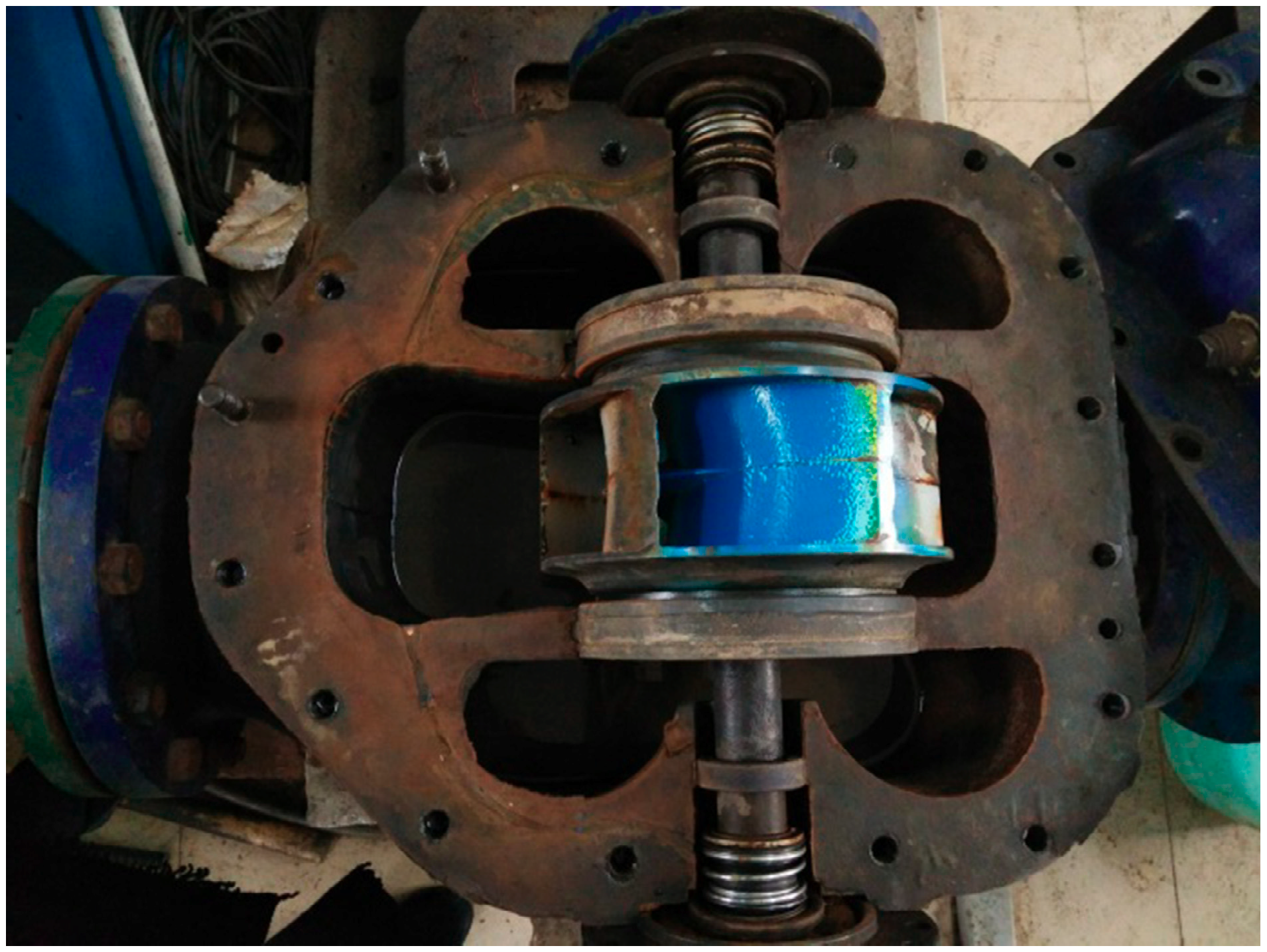

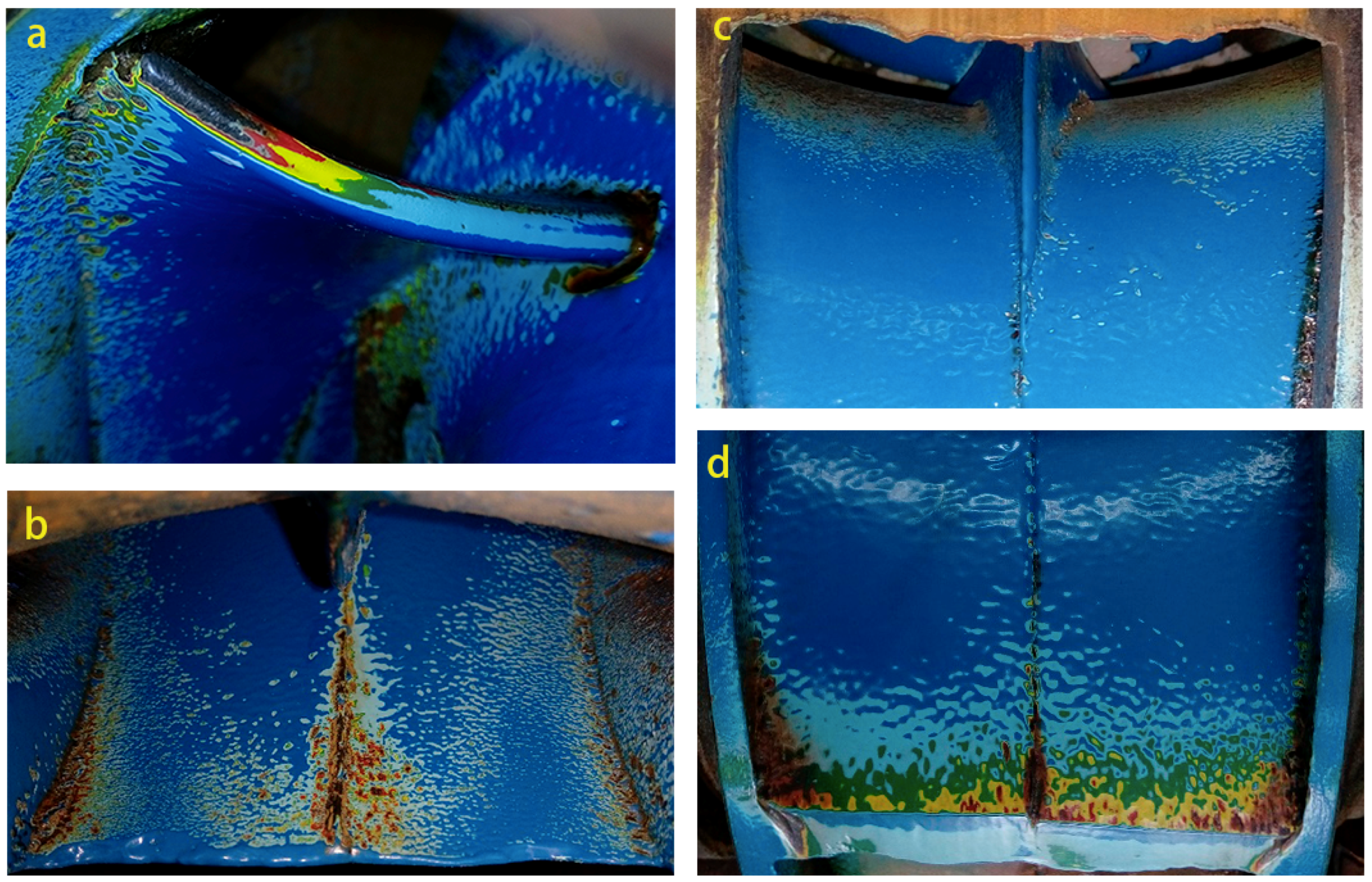
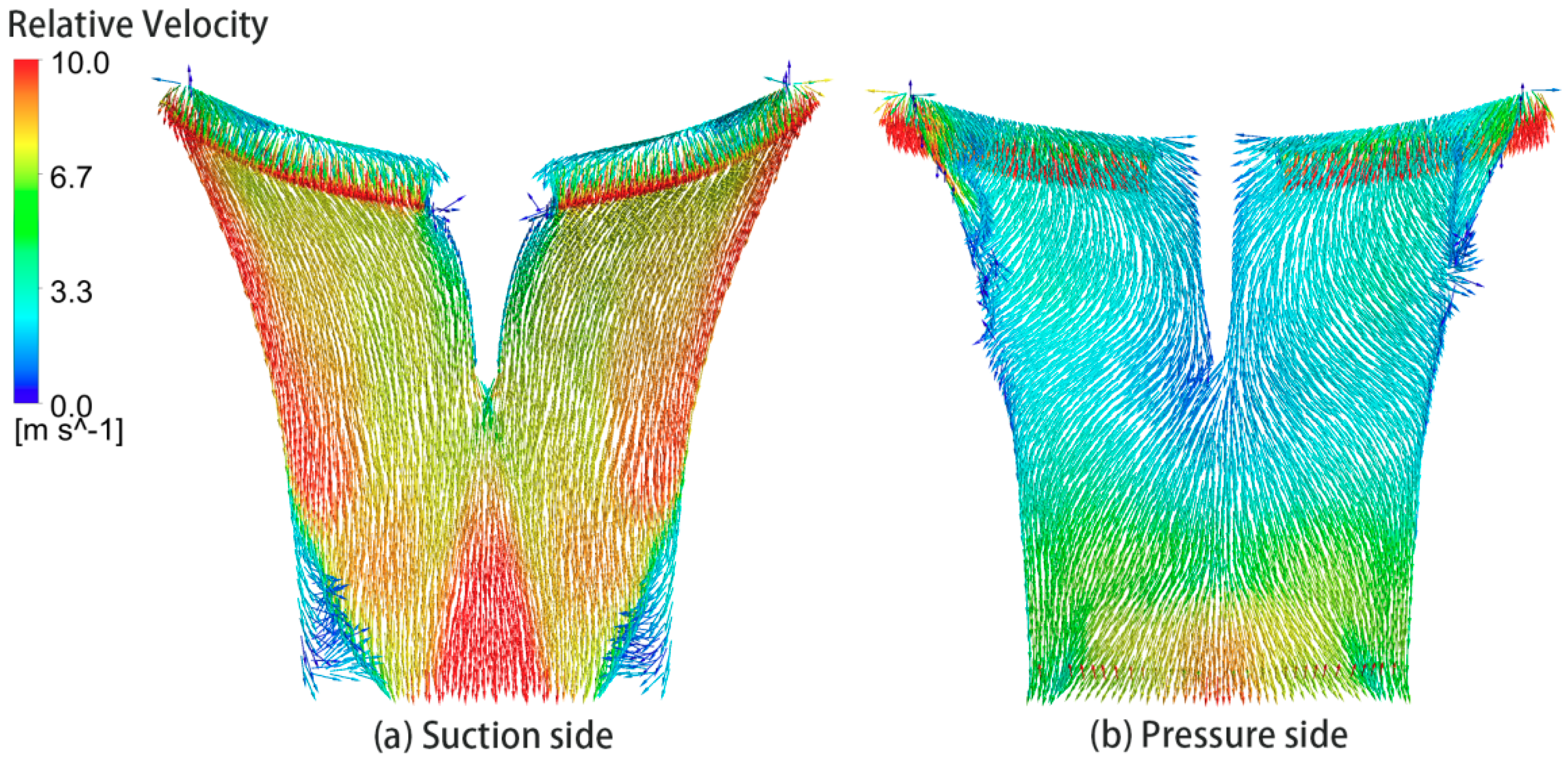
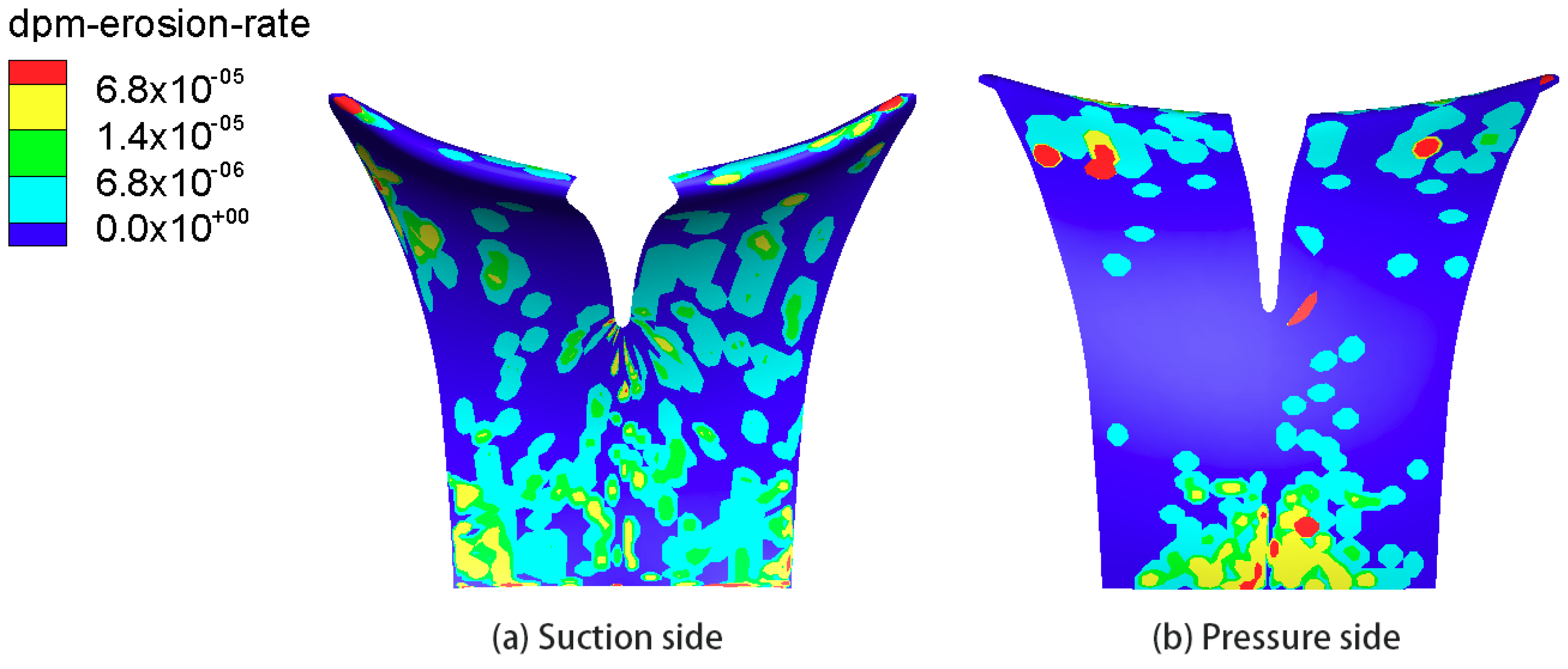
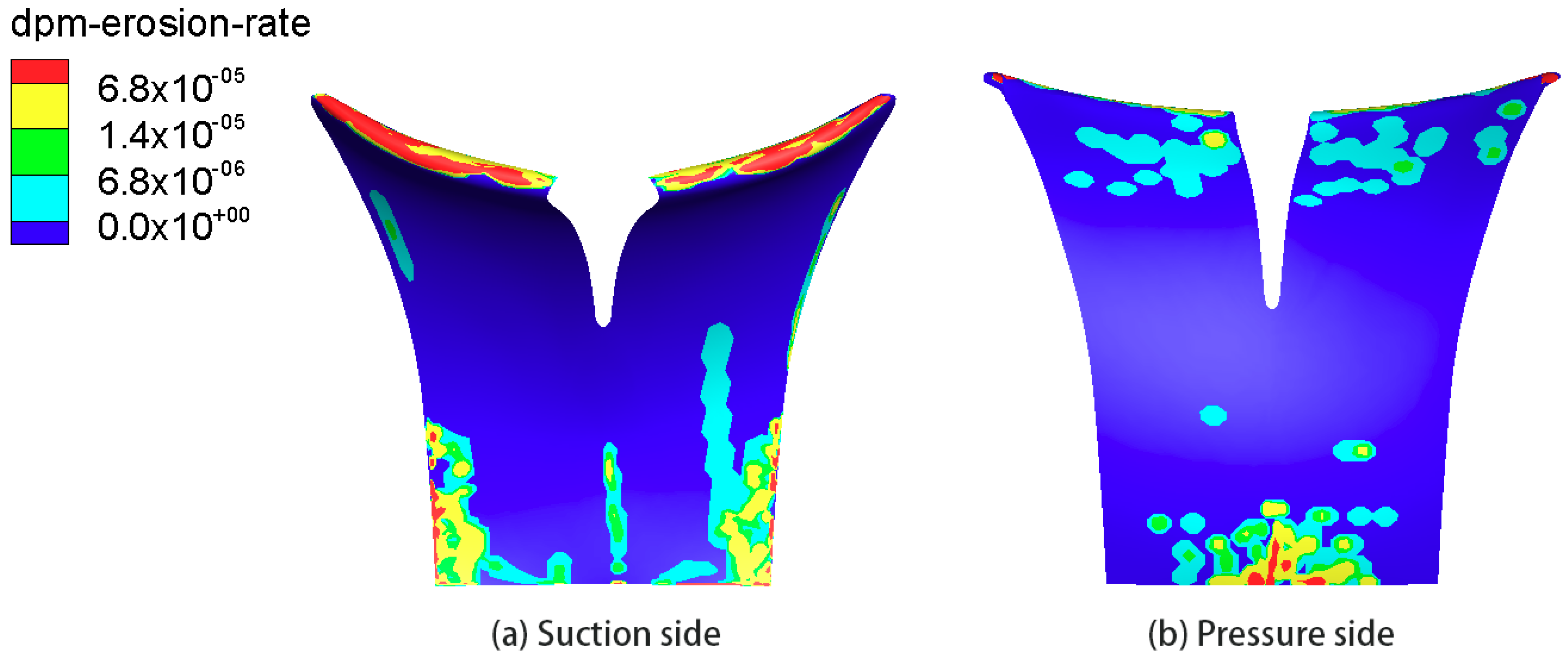
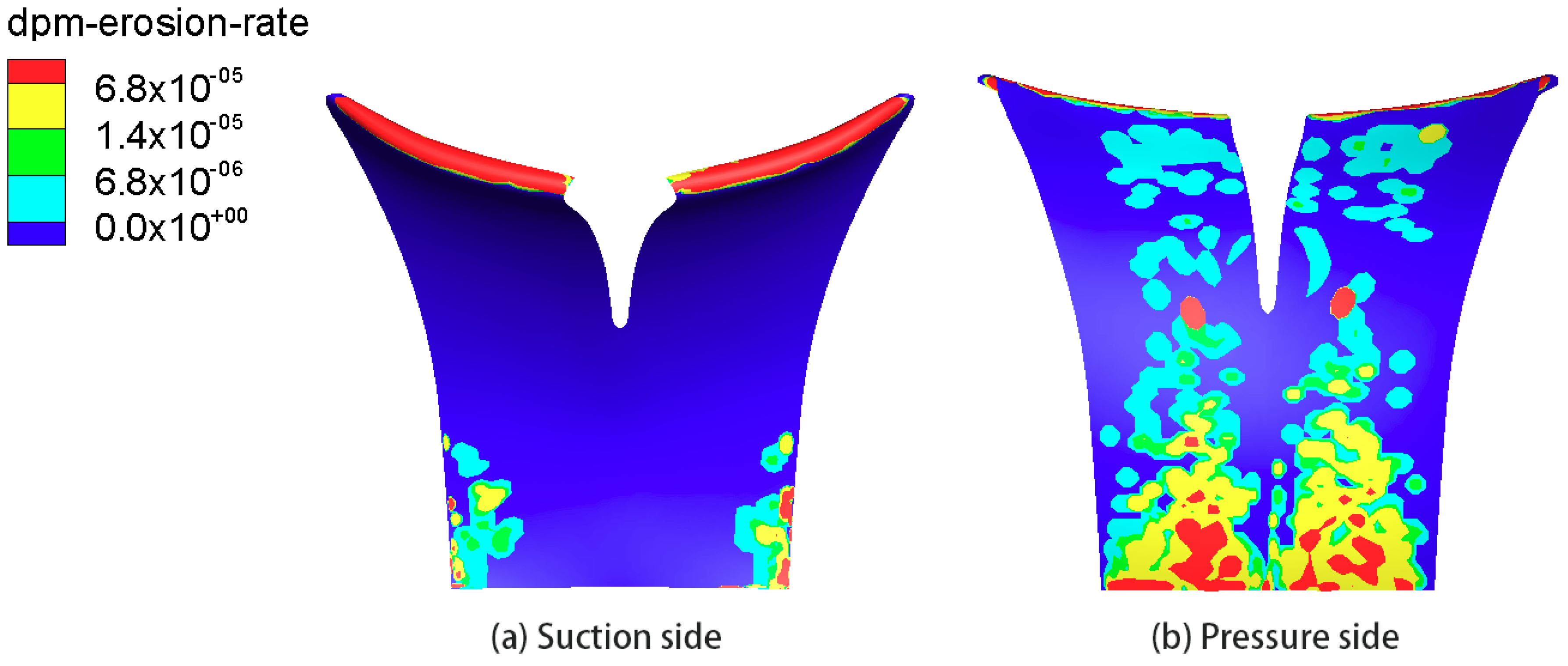
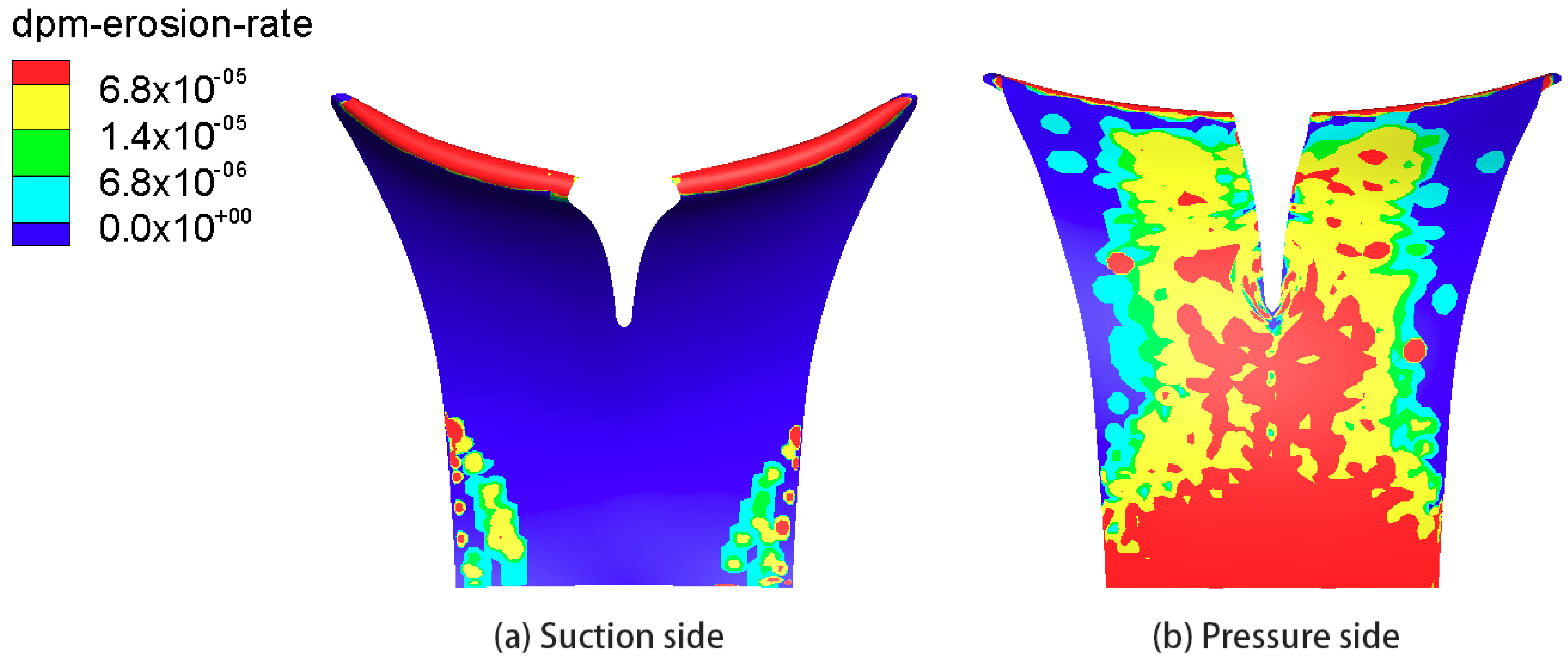
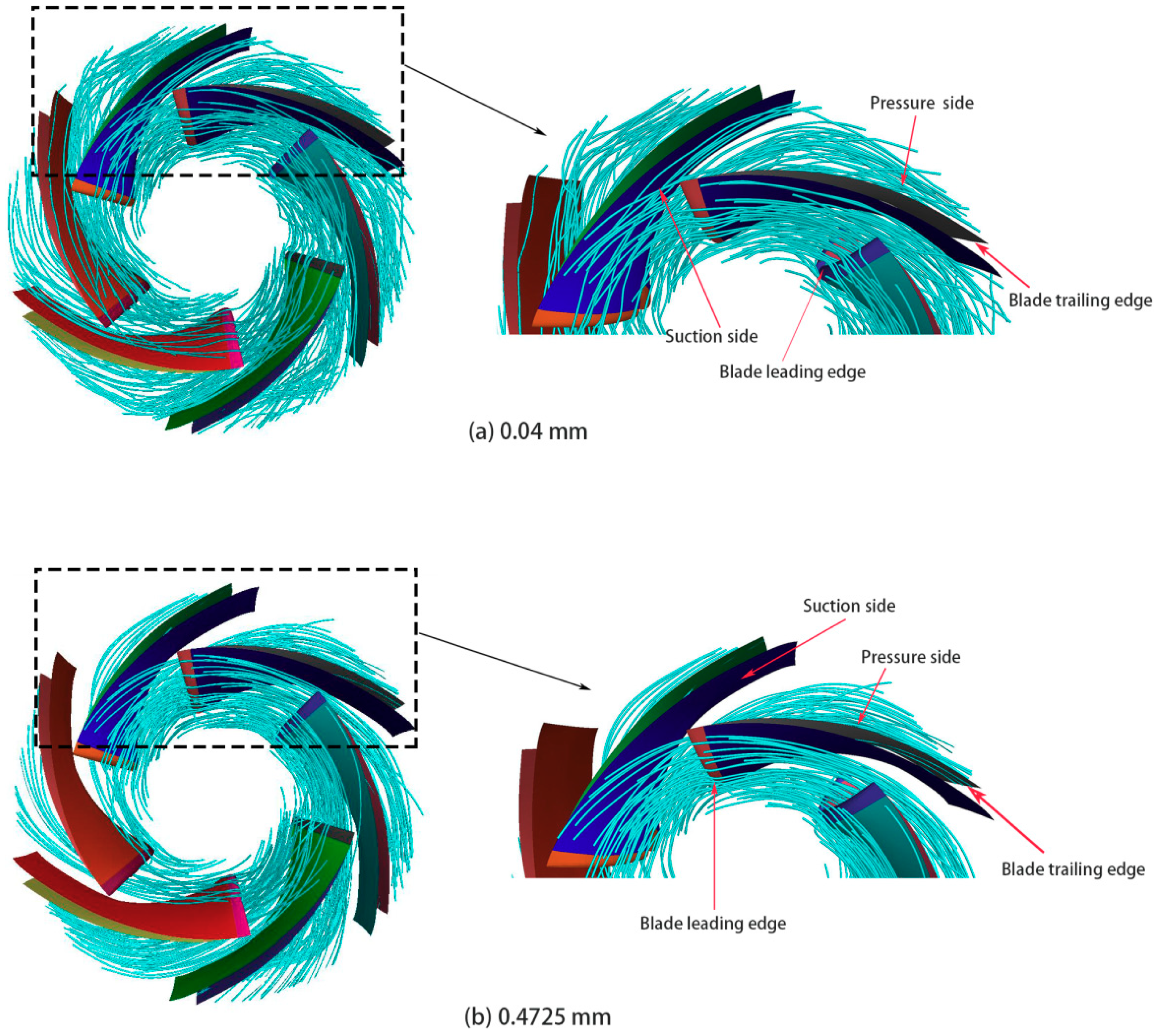
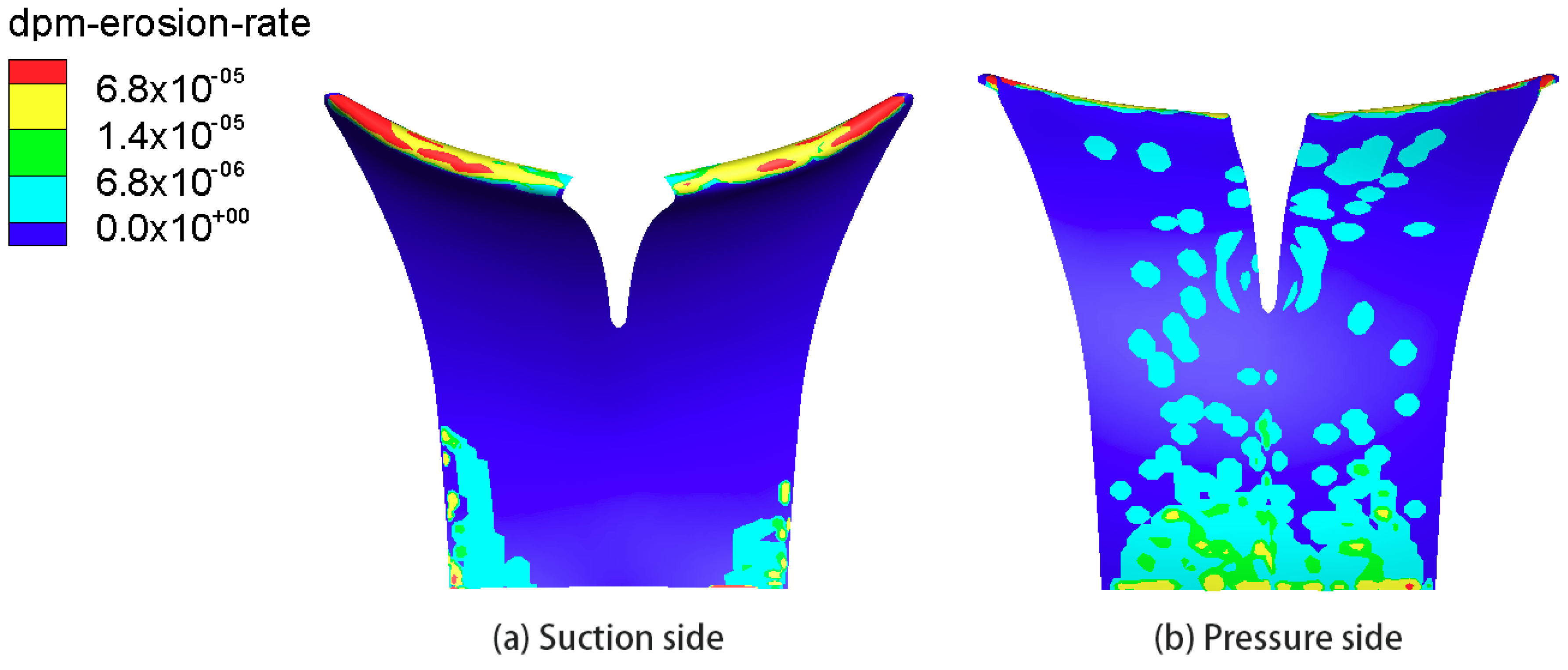
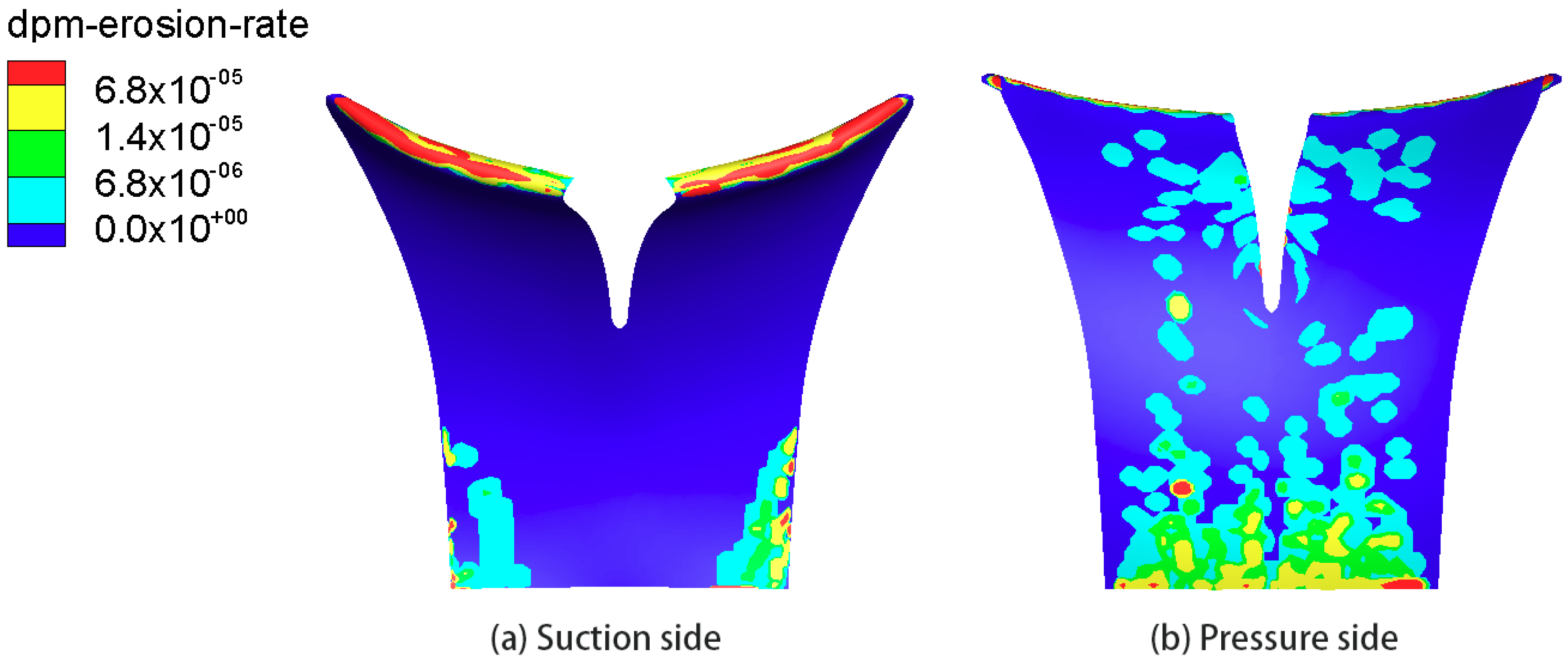
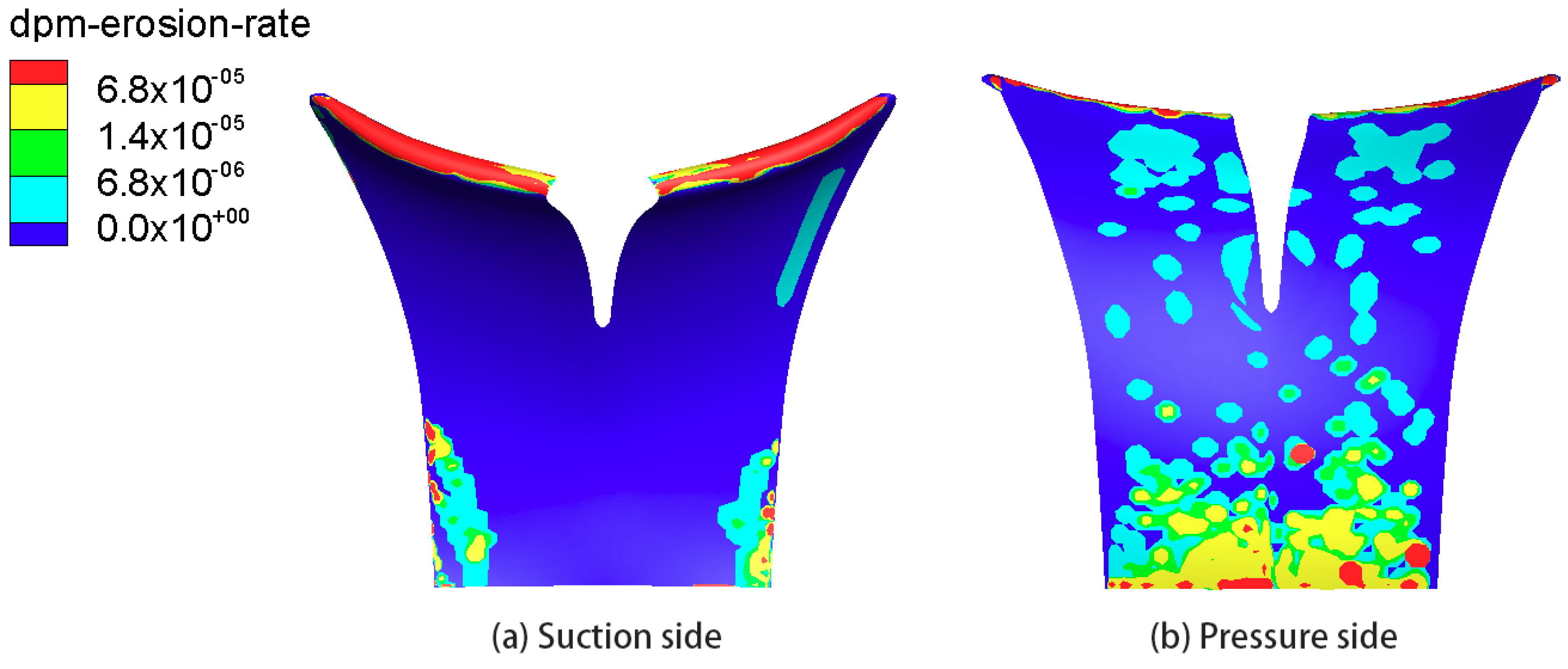
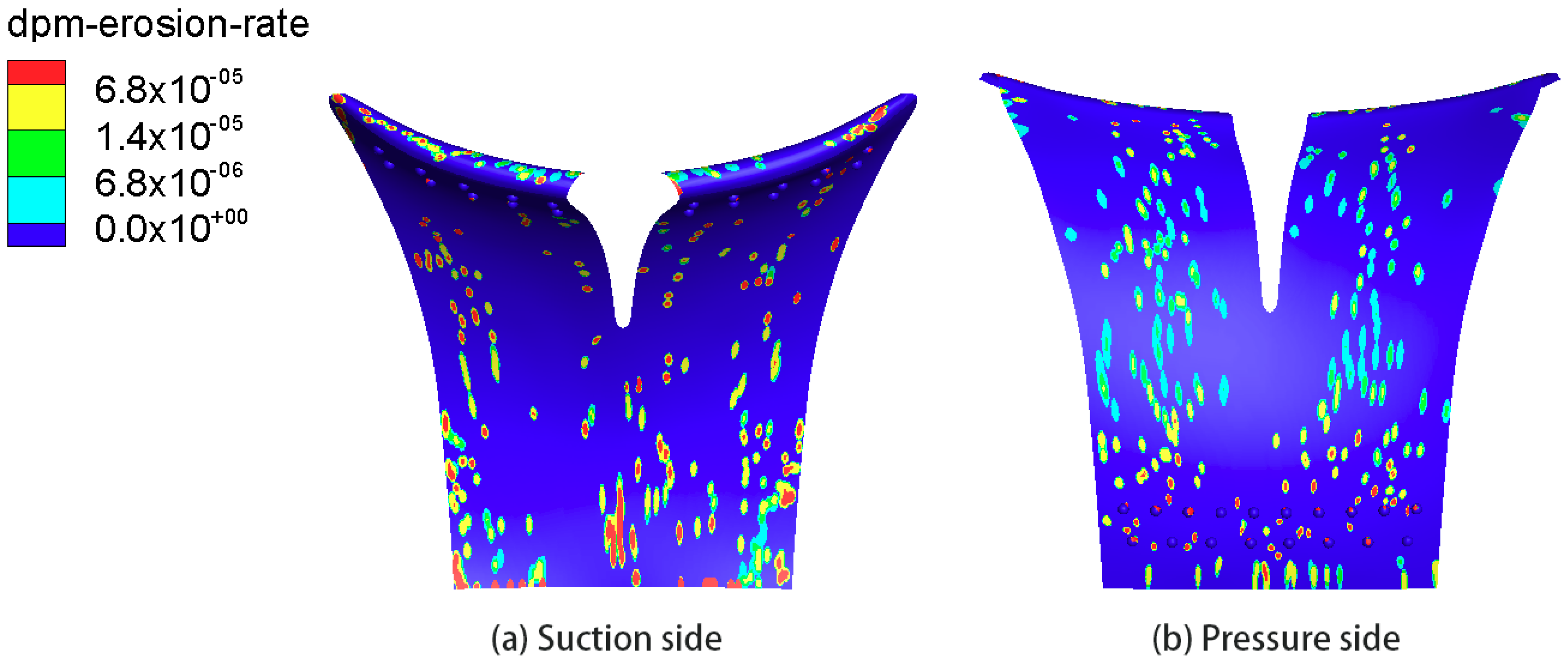
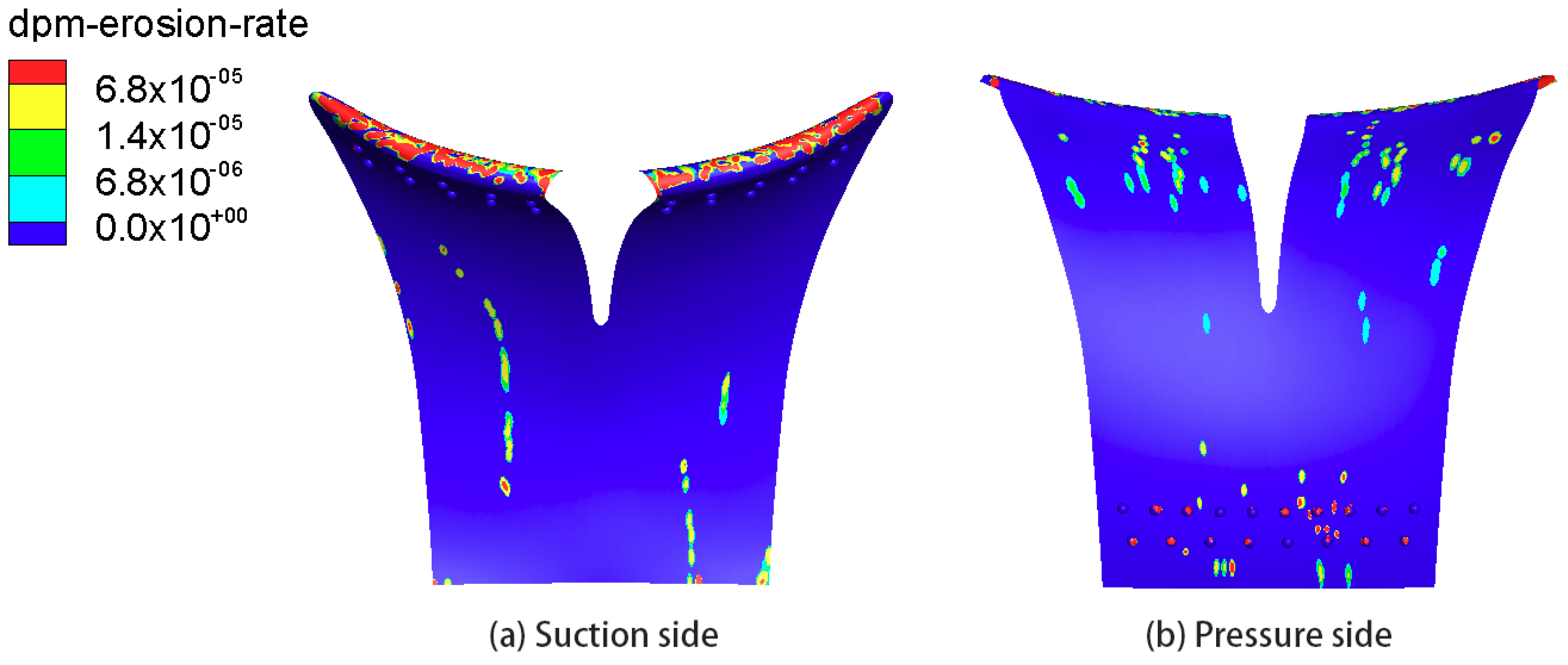
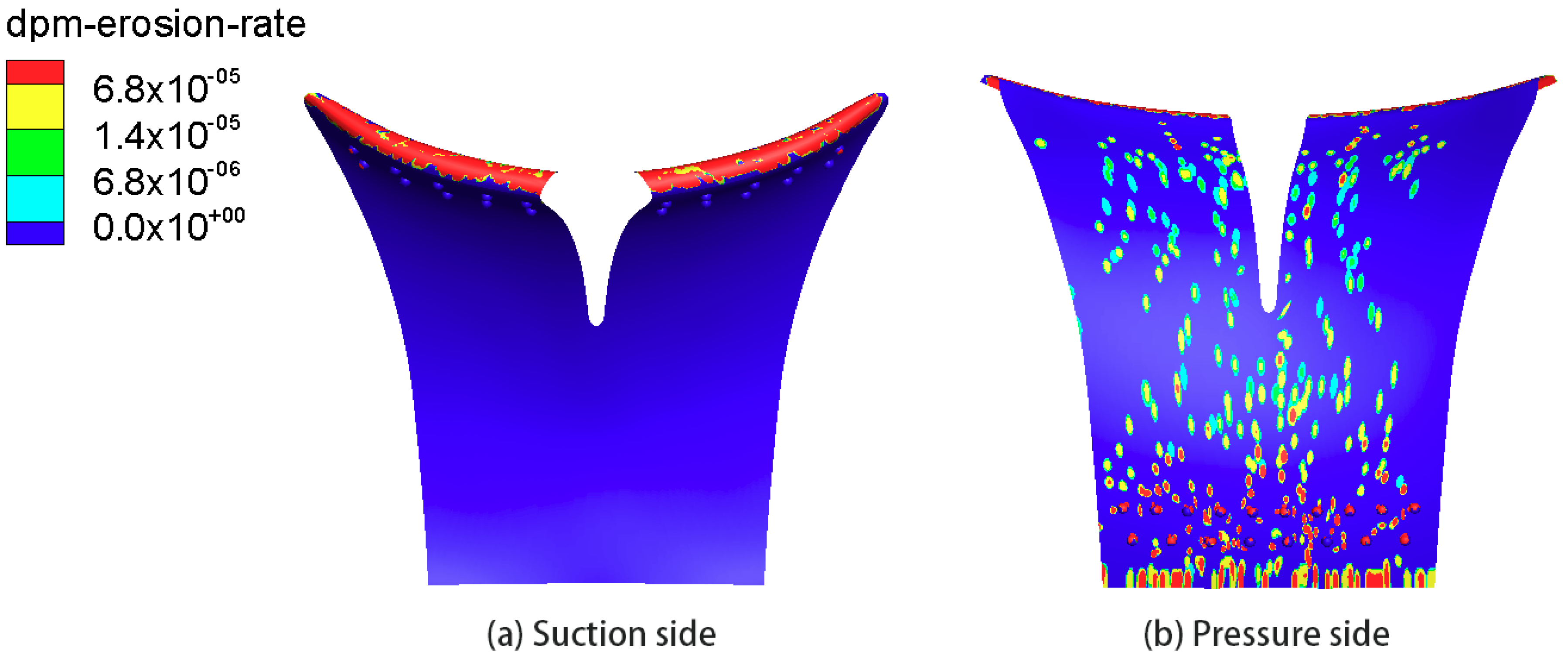
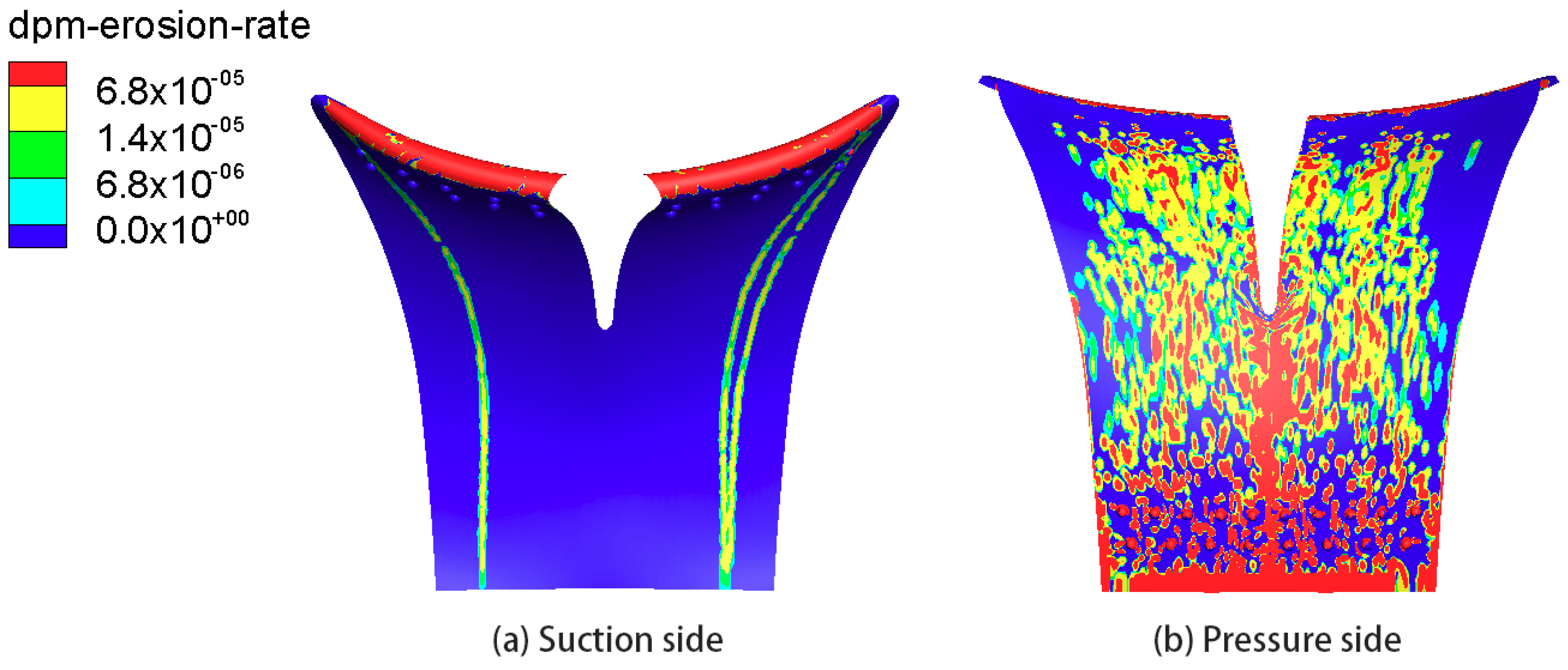
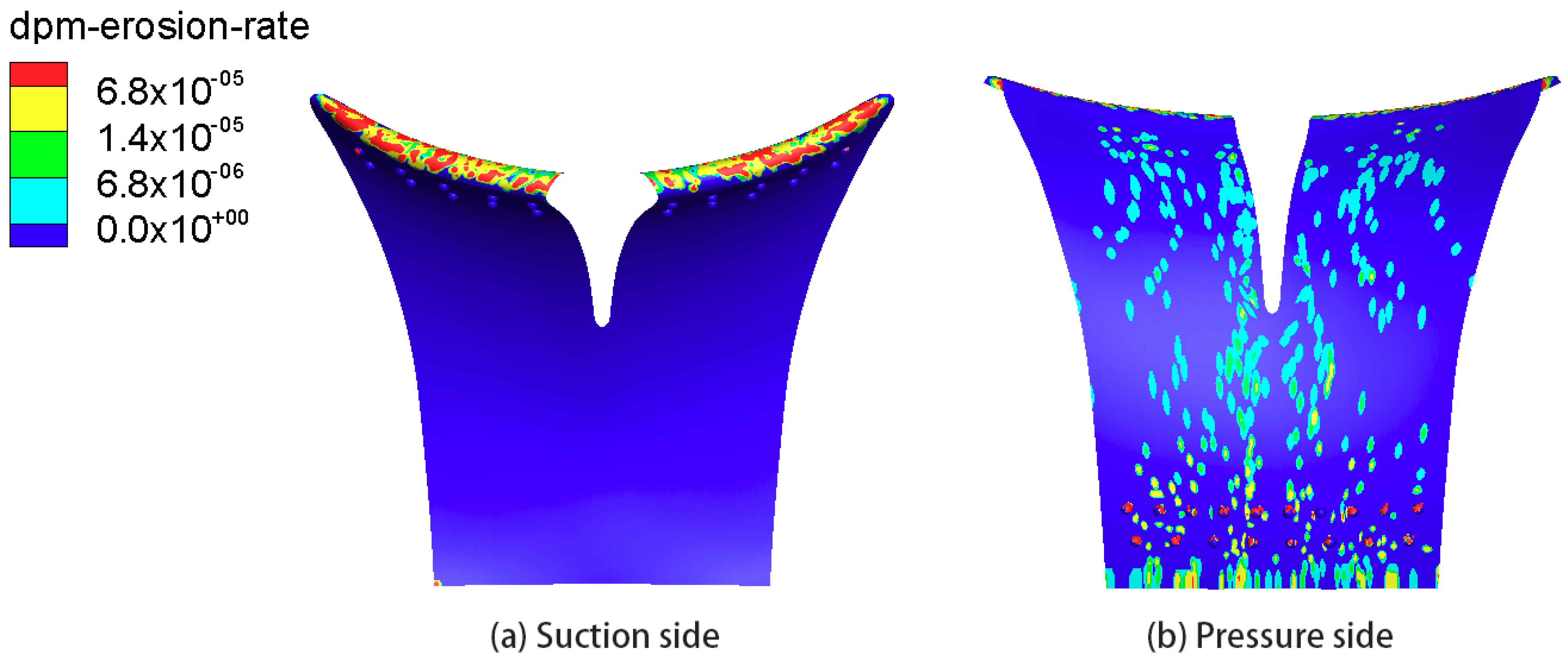
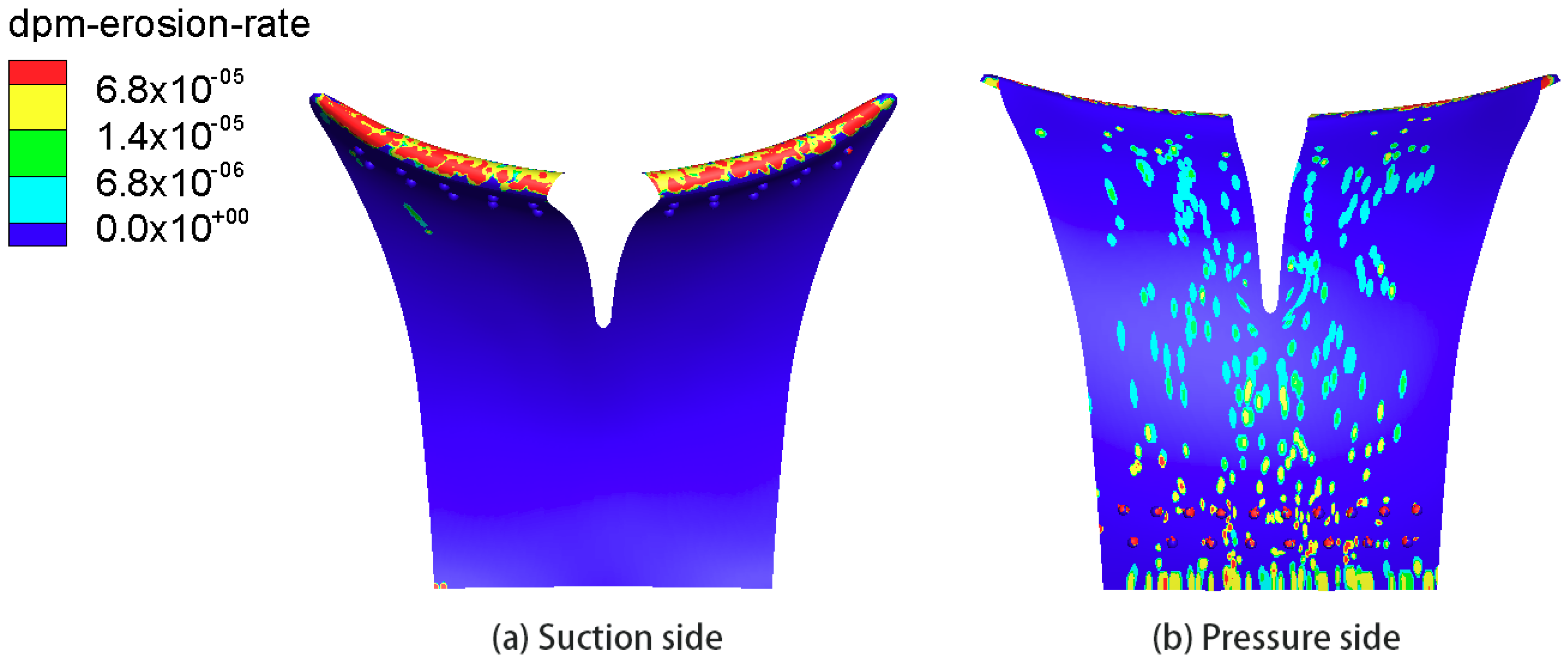
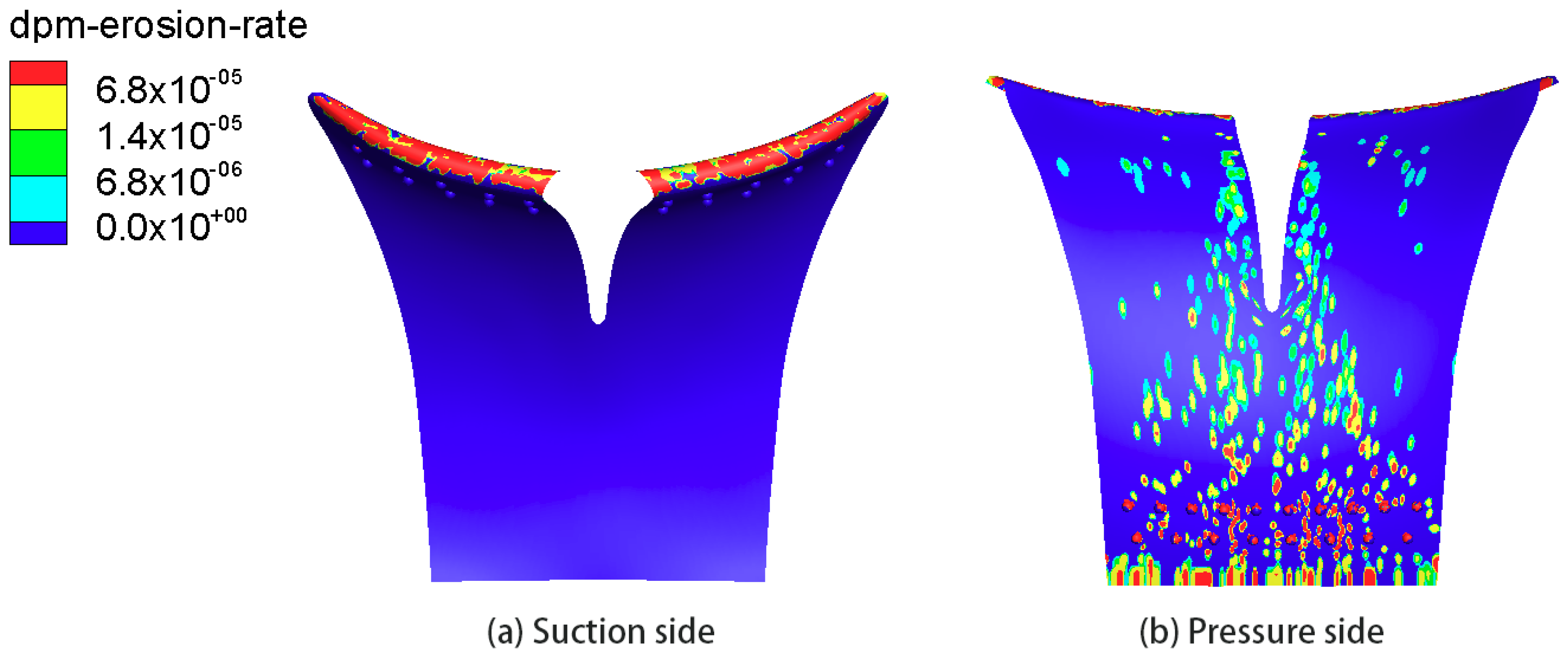
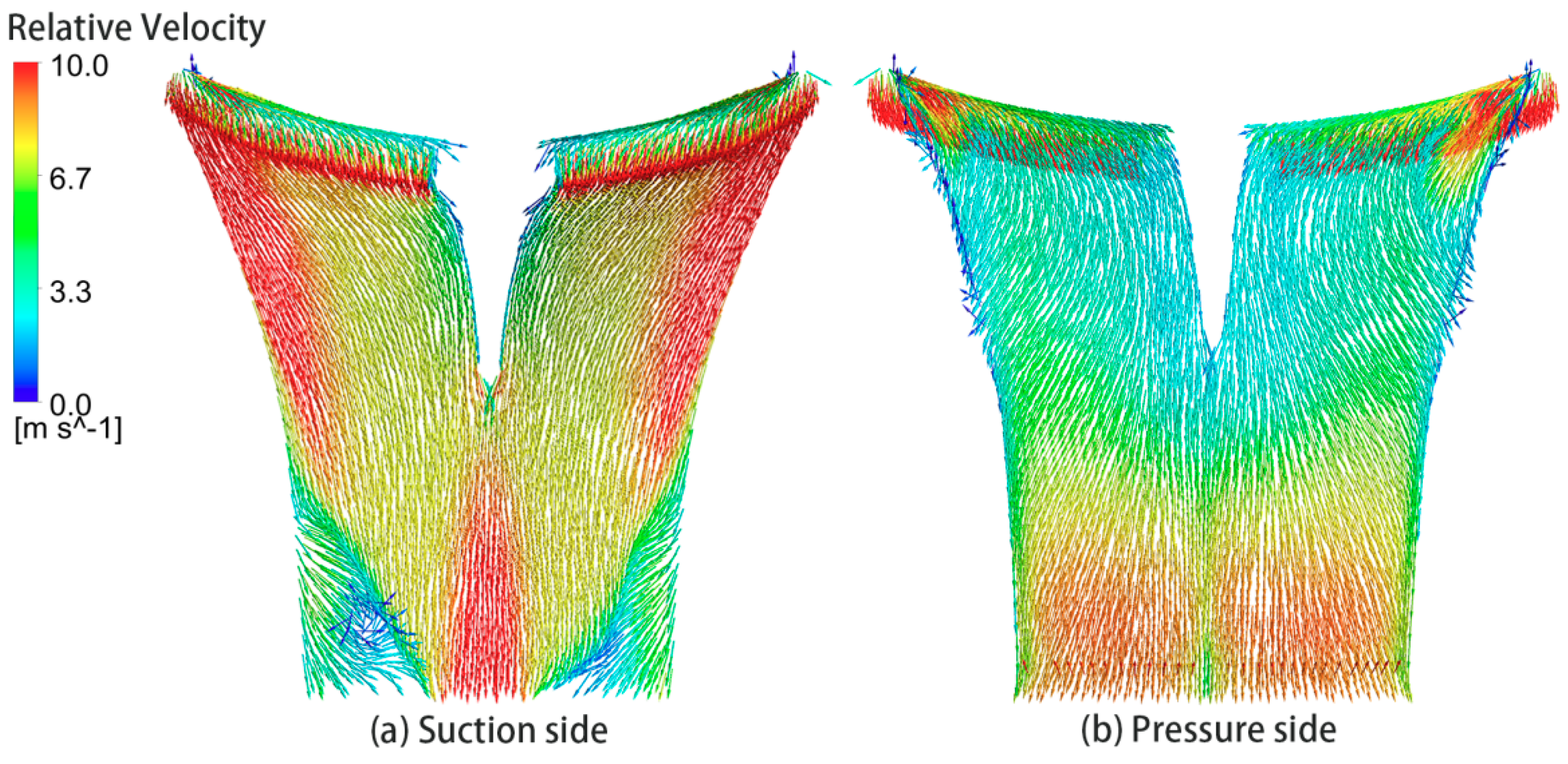
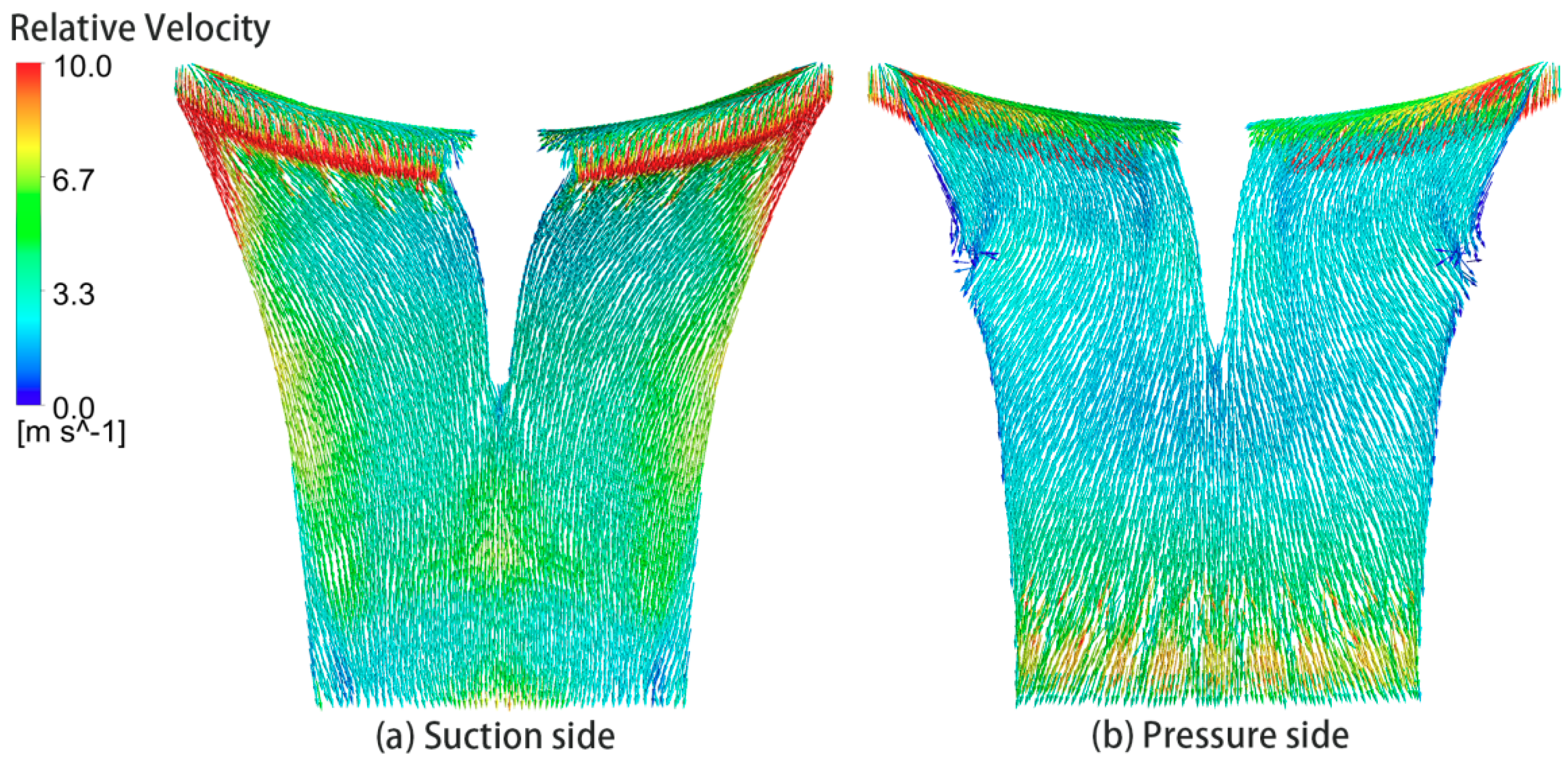
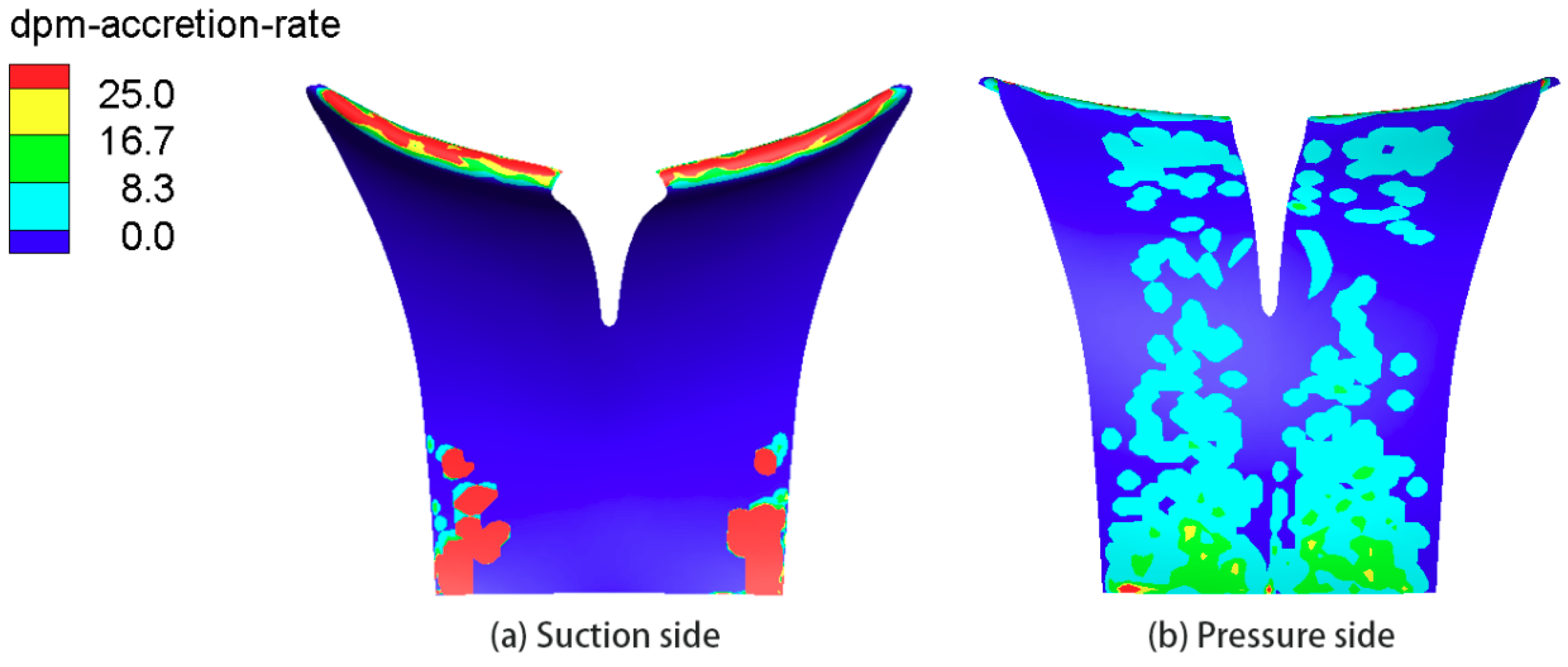
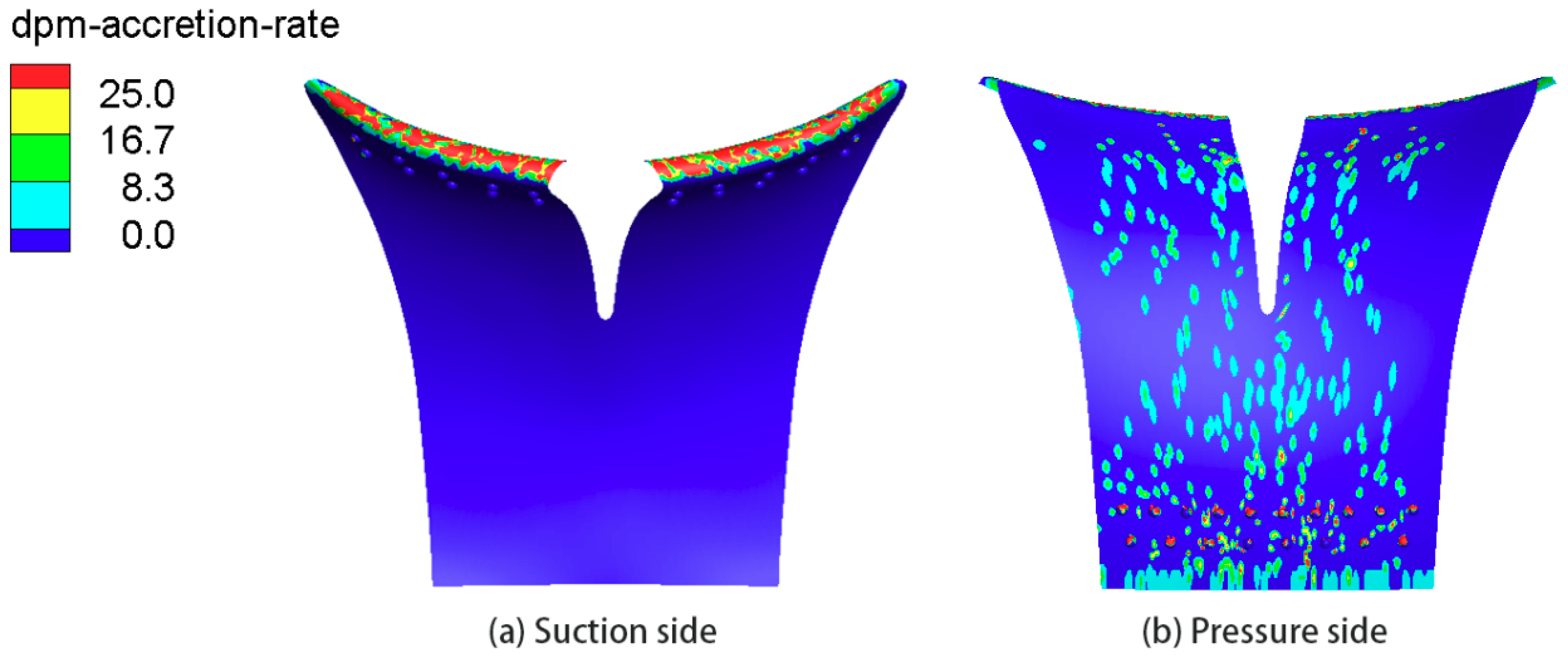
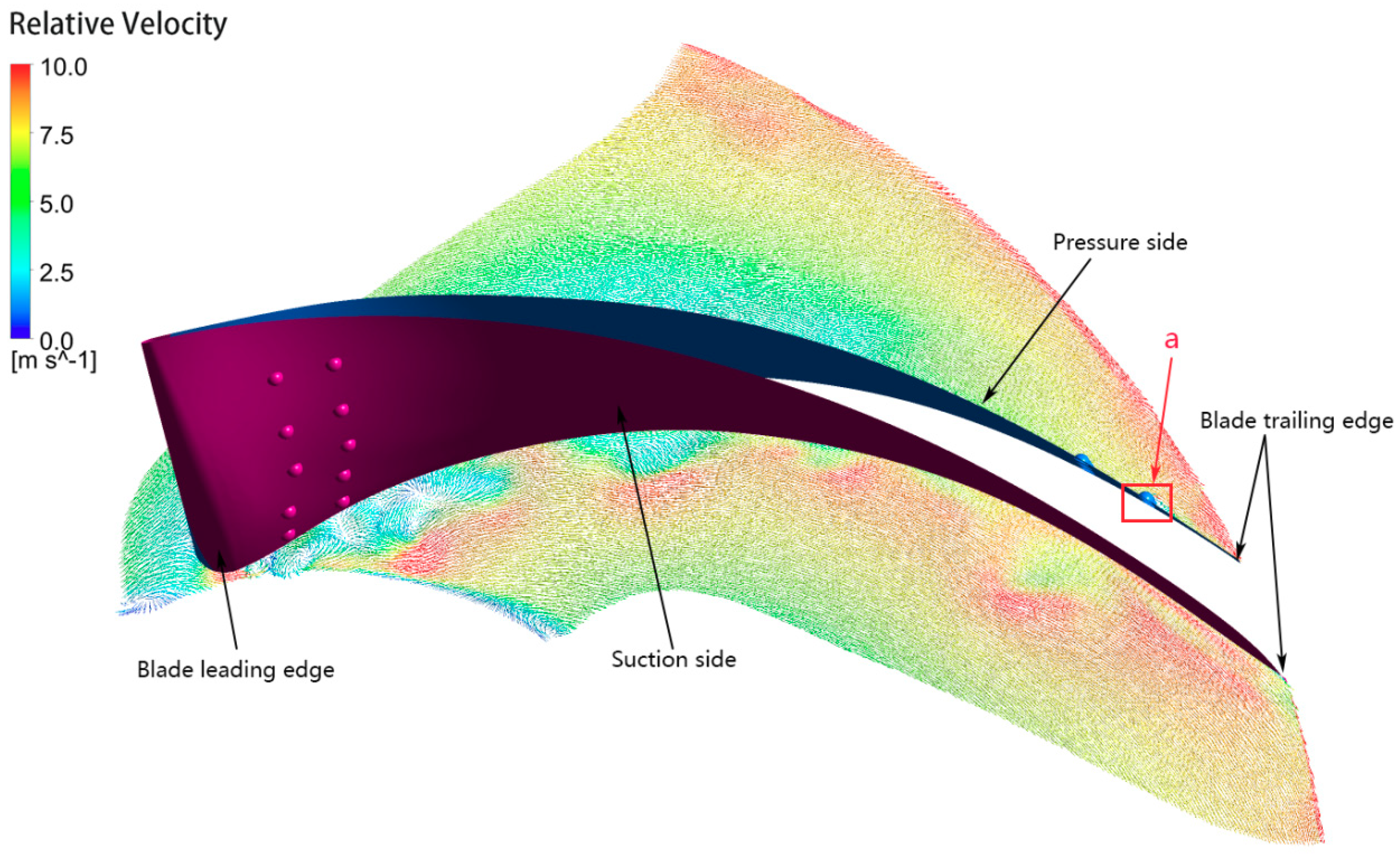
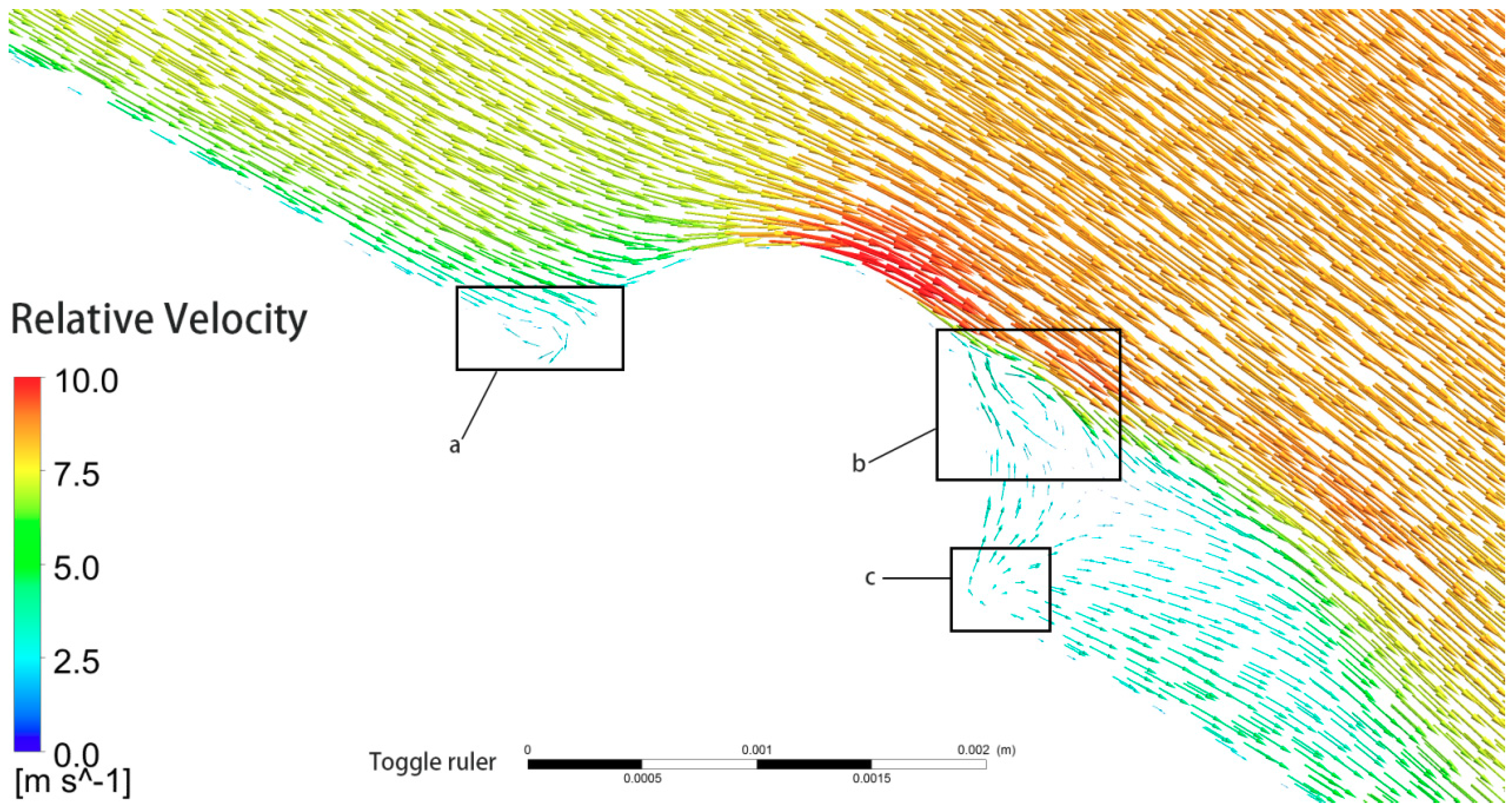
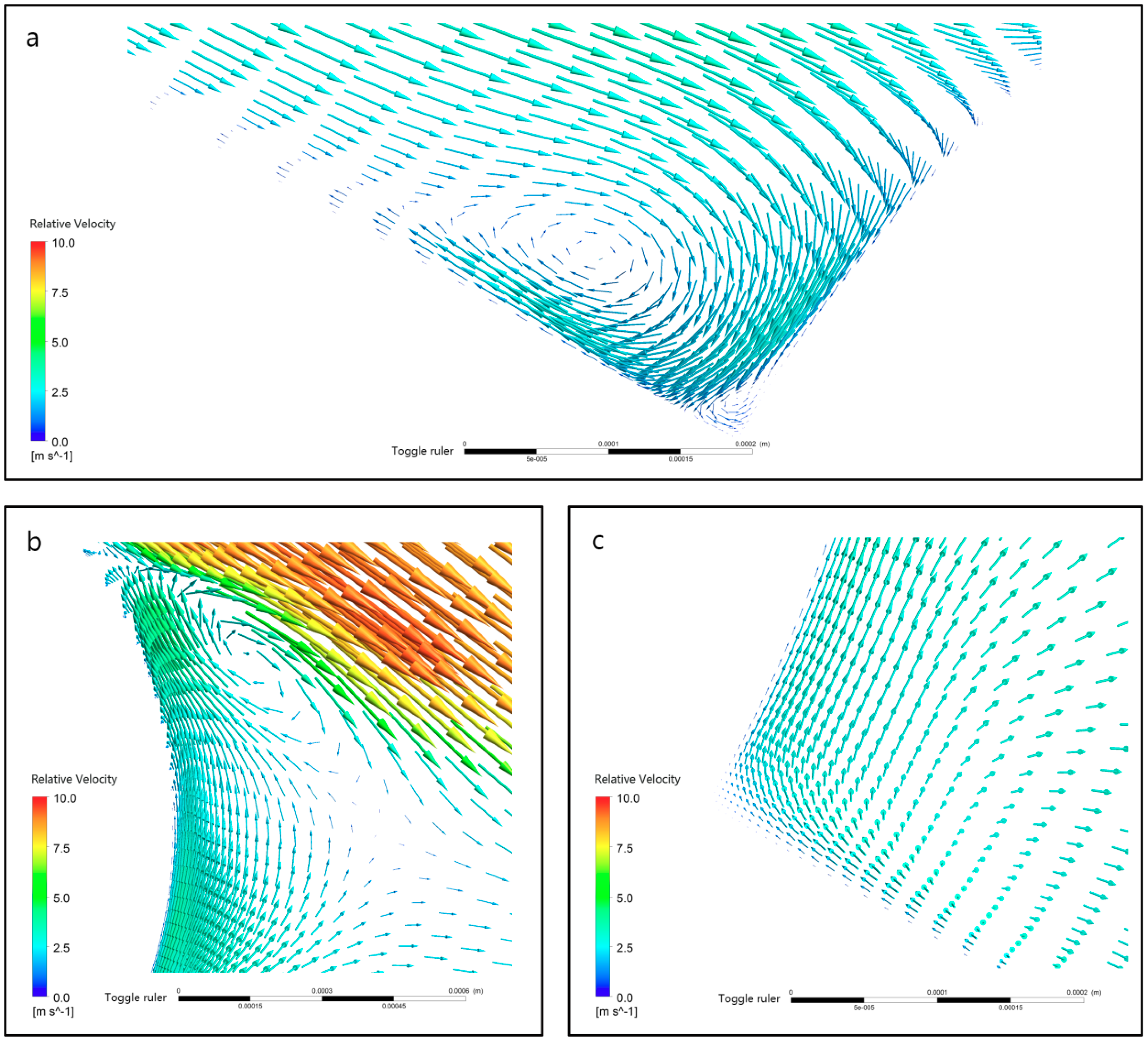
| Items | Values |
|---|---|
| Hd (design head, m) | 14.0 |
| Qd (design discharge, m3/s) | 0.134 |
| Zb (amount of blades) | 6 |
| D2 (diameter of impeller outlet, mm) | 245 |
| n (rotation speed, r/min) | 1450 |
| ns (specific speed, given by ) | 190 |
© 2019 by the authors. Licensee MDPI, Basel, Switzerland. This article is an open access article distributed under the terms and conditions of the Creative Commons Attribution (CC BY) license (http://creativecommons.org/licenses/by/4.0/).
Share and Cite
Dong, J.; Qian, Z.; Thapa, B.S.; Thapa, B.; Guo, Z. Alternative Design of Double-Suction Centrifugal Pump to Reduce the Effects of Silt Erosion. Energies 2019, 12, 158. https://doi.org/10.3390/en12010158
Dong J, Qian Z, Thapa BS, Thapa B, Guo Z. Alternative Design of Double-Suction Centrifugal Pump to Reduce the Effects of Silt Erosion. Energies. 2019; 12(1):158. https://doi.org/10.3390/en12010158
Chicago/Turabian StyleDong, Jing, Zhongdong Qian, Biraj Singh Thapa, Bhola Thapa, and Zhiwei Guo. 2019. "Alternative Design of Double-Suction Centrifugal Pump to Reduce the Effects of Silt Erosion" Energies 12, no. 1: 158. https://doi.org/10.3390/en12010158
APA StyleDong, J., Qian, Z., Thapa, B. S., Thapa, B., & Guo, Z. (2019). Alternative Design of Double-Suction Centrifugal Pump to Reduce the Effects of Silt Erosion. Energies, 12(1), 158. https://doi.org/10.3390/en12010158





